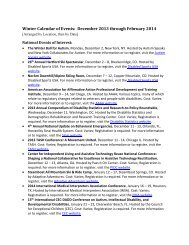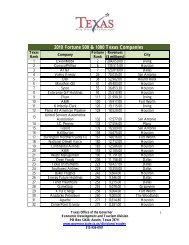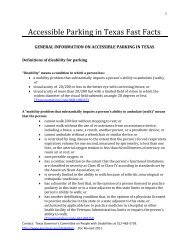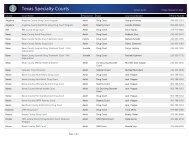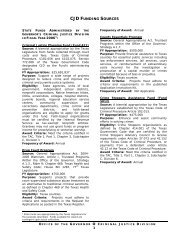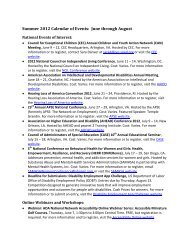Border Security Council Report - Office of the Governor - Rick Perry
Border Security Council Report - Office of the Governor - Rick Perry
Border Security Council Report - Office of the Governor - Rick Perry
Create successful ePaper yourself
Turn your PDF publications into a flip-book with our unique Google optimized e-Paper software.
Section Five: Recommendations<br />
10<br />
Section Five: Recommendations<br />
A. Performance Standards<br />
Recommendation:<br />
Operational success should be measured in deterrence and prevention ra<strong>the</strong>r than an increase in <strong>the</strong><br />
numbers <strong>of</strong> arrests and seizures. Reductions in all crime in unincorporated areas in Texas counties<br />
that border Mexico should be a measure <strong>of</strong> performance.<br />
Discussion:<br />
An increase in resources may initially lead to an increase in arrests and seizures, as <strong>the</strong>re are more<br />
people to identify <strong>the</strong> wrongdoing.<br />
Drug and human smuggling organizations, members <strong>of</strong> transnational gangs, and opportunistic<br />
criminals exploit <strong>the</strong> unincorporated and unprotected areas along <strong>the</strong> Texas/Mexico border to enter<br />
<strong>the</strong> U.S., and while doing so <strong>of</strong>ten engage in various criminal activities.<br />
When drug and human smuggling increase along <strong>the</strong> border, so does crime. The most serious crimes<br />
are reflected in what are referred to as “index crimes” which local law enforcement agencies are<br />
mandated to report to Texas Department <strong>of</strong> Public Safety Crime Records. The index crime information<br />
is <strong>the</strong>n forwarded to <strong>the</strong> Federal Bureau <strong>of</strong> Investigation as <strong>the</strong> basis for <strong>the</strong> annual Uniform Crime<br />
<strong>Report</strong>s. However, <strong>the</strong> current process takes an excessive amount <strong>of</strong> time and is not easily accessible<br />
to monitor progress near real time. Fur<strong>the</strong>rmore, this process does not capture data on crimes such<br />
as trespassing and vandalism which are better indicators <strong>of</strong> smuggling activity. Efforts should be made<br />
to streamline <strong>the</strong> existing process to better enable <strong>the</strong> identification <strong>of</strong> trends and patterns and assess<br />
operations. 6<br />
Recommendation:<br />
The reduction <strong>of</strong> <strong>Border</strong> Patrol illegal alien apprehension rate along <strong>the</strong> in Texas/Mexico border should<br />
be a key measure.<br />
Discussion:<br />
Traditional law enforcement measures <strong>of</strong> success were based upon volume ra<strong>the</strong>r than impact. An<br />
increased number <strong>of</strong> arrests and seizures was an indicator <strong>of</strong> success, although smuggling activity,<br />
crime and availability <strong>of</strong> drugs may have increased. As <strong>the</strong> border becomes more secure it will become<br />
more difficult and costly for smuggling organizations to move people and drugs across <strong>the</strong> Texas/<br />
Mexico border, and <strong>the</strong>refore, <strong>the</strong> number <strong>of</strong> illegal apprehension arrests will decrease, even when<br />
more agents and <strong>of</strong>ficers are available to make more apprehensions. The illegal alien apprehension<br />
rate in Texas by fiscal year since 2005 demonstrates an overall reduction <strong>of</strong> illegal alien apprehensions<br />
by 66 percent.<br />
Fiscal Year Arrests Reduction<br />
2005 4, 96<br />
2006 284,262 15%<br />
2007 192,98 2%<br />
2008 114,6 2* 40.5%<br />
6 Currently, <strong>the</strong> Texas Department <strong>of</strong> Public Safety assesses <strong>the</strong> total number <strong>of</strong> index crimes divided by <strong>the</strong> total Texas population. That result is <strong>the</strong>n<br />
divided by 100,000 to obtain <strong>the</strong> crime index rate per 100,000 population.




